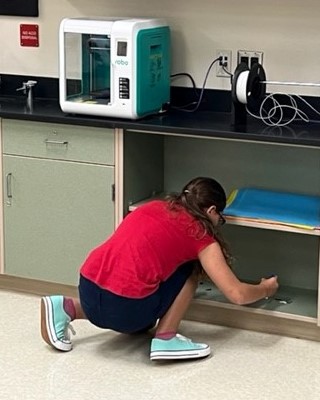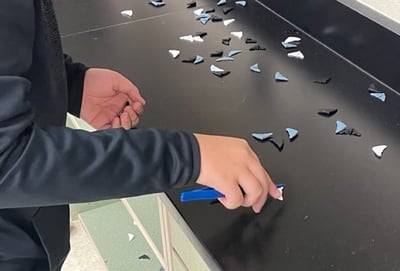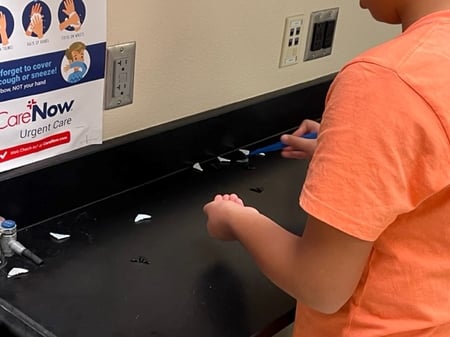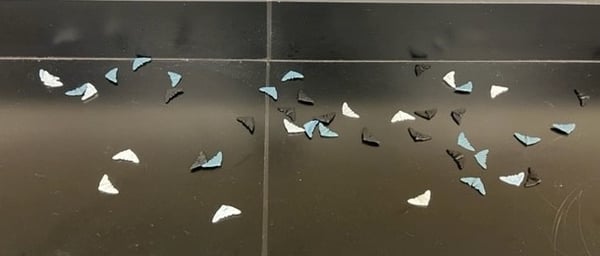
In this lesson, our STEM MimioMaster Meredith Williams shares how she used the MyStemKits Moths Kit to introduce Dr. Kettlewell’s Peppered Moth investigations on natural selection (for more information on Dr. Kettlewell’s work, click here).
Adaptation of Moths
STEM Supplies:
- Moths Kit from MyStemKits
-
- 7 kits each of white moths, grey moths, black moths
Grade Level: 6
Objectives: Students will connect natural selection to a short activity using 3D-printed moths.
Time frame: 10-15 minutes
Prior Knowledge: The day before the activity, students investigated the Theory of Evolution, specifically natural selection and the five parts of this concept.
Lesson description
Instead of entering class right away, students were told to wait in the hallway until the bell rang. Once the hallway was clear I gave them brief instructions on the activity. I explained that, as they entered the classroom, they were transforming into birds of prey. I showed an example of their ‘honorary beak’ - a pair of long handle, plastic tweezers. Students were instructed to place all items at the front of the classroom and remain lined up. Upon entering, each student received one pair of long handled plastic tweezers.
Once the students were lined up at the front of the classroom, more instructions were given:
- As birds of prey, they had 60 seconds to catch as many moths as possible using only their ‘beaks.’ They could not use their hands! 3D-printed moths were placed all over the classroom - on tables, chairs, shelves, and the outer edges of the floor. I did need to remind students to be careful they didn’t step or slip on the moths on the floor.
- A timer was displayed on the whiteboard so they could see how much time they had left.
- When the 60 seconds were done, students needed to freeze in place and count the moths they ‘caught’ by color!



A majority of the students ended up with more white moths - approximately 73% of all moths eaten were white. This could’ve been because the classroom desks and tables are jet black, while floors are eggshell and shelves are light green). No matter which surfaces the white moths were on, students said they were the easiest to see.

This quick activity gets students up, moving, and engaged. The concept of why adaptation MUST occur in a species was completely understood by each student. They were able to see this concept firsthand and how camouflage helps a species live long enough to reproduce.
Student feedback:
- “When I was in the middle (of classroom) I only saw white (moths). It wasn’t until I was on top of them, I could see the black colored ones (moths).” - G. Weber
- “I love being a bird, but man it is hard to catch food!” - M. Fernandez
- “Now I totally get why the white moths wouldn’t survive. They get eaten way too fast.” - K. Hoyle
About the Author: Meredith Williams, a science teacher at Freedom Middle School (Orlando, FL), specializes in integrating MimioSTEM solutions in her science instruction. To encourage her students to think critically and creatively about problems through science exploration, Williams incorporates a variety of 3D-printed manipulatives, so her students have something hands-on to observe, analyze, and form ideas around. Williams also regularly implements and provides feedback on MyStemKits lessons and activities, which she uses in conjunction with her Robo 3D printer.


